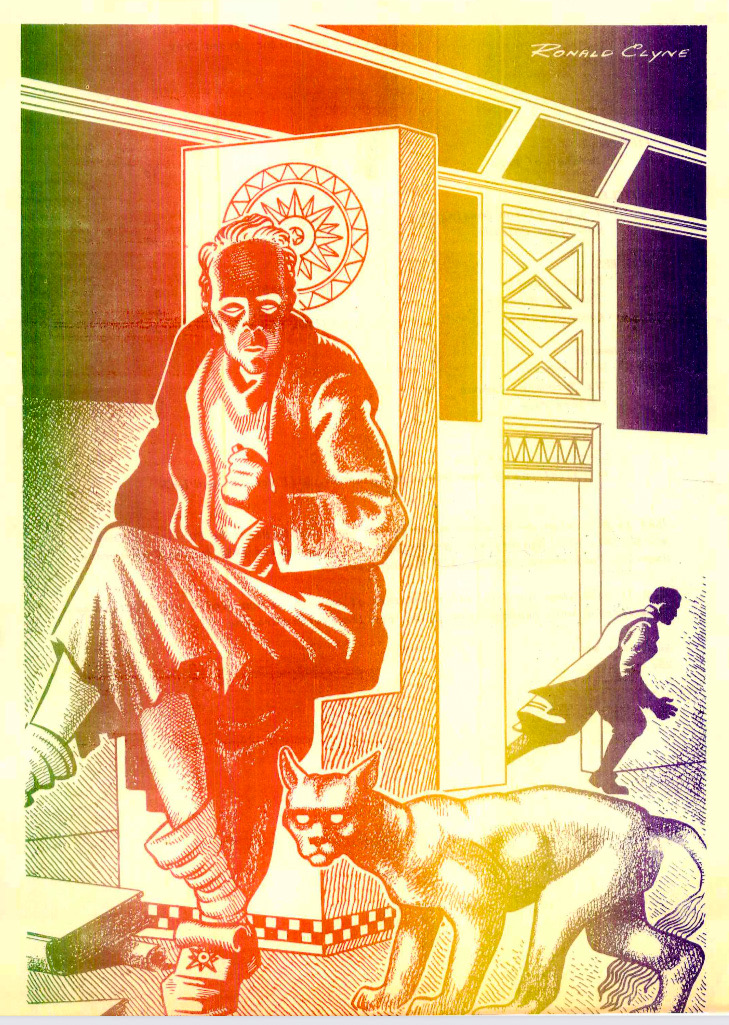Difference between revisions of "Rexstripe"
m (Text replacement - "Contributors: Dr. Gafia " to "") |
|||
| (3 intermediate revisions by 2 users not shown) | |||
| Line 1: | Line 1: | ||
| − | A variation on the [[Vicolor | + | [[File:ClyneCover.jpeg|frame|center|'''Rexstriped cover [[art]] by [[Ronald Clyne]]'''. ''From [[Lynn Hickman]]’s ''[[TLMA]]'' 3 ([https://fanac.org/fanzines/TLMA/TLMA-3-hickman-1952-04.pdf May 1952])''.]] |
| + | |||
| + | |||
| + | Also, '''Gestripe'''. A variation on the [[Vicolor]] process for application with [[Rex Rotary]], [[Gestetner]] and other [[silk screen]]-inking [[mimeographs]] to produce multi-color [[mimeo]] work. [[Dick Lupoff]] used it in his [[fanzine]] ''[[Xero]]'', though he was not the first, as the 1952 example above shows. | ||
| + | |||
| + | The [[silk screen]] could not be "painted" with different colored [[mimeograph]] inks in the way the cotton pads were in the [[Vicolor]] process, because the use of the silk screen inking process was specifically designed to distribute the ink evenly. However, by introducing different colors to particular parts of the drum at the top of the machine, a [[mimeographer]] could produced a "striped" color effect, and the way to continue the effect once the [[silk screen]] began to even out the combined colors was simply to apply the different colors again. | ||
| + | |||
| + | See [[Vicolor]]. | ||
{{publishing}} | {{publishing}} | ||
Latest revision as of 18:11, 6 May 2023
Also, Gestripe. A variation on the Vicolor process for application with Rex Rotary, Gestetner and other silk screen-inking mimeographs to produce multi-color mimeo work. Dick Lupoff used it in his fanzine Xero, though he was not the first, as the 1952 example above shows.
The silk screen could not be "painted" with different colored mimeograph inks in the way the cotton pads were in the Vicolor process, because the use of the silk screen inking process was specifically designed to distribute the ink evenly. However, by introducing different colors to particular parts of the drum at the top of the machine, a mimeographer could produced a "striped" color effect, and the way to continue the effect once the silk screen began to even out the combined colors was simply to apply the different colors again.
See Vicolor.
| Publishing |
